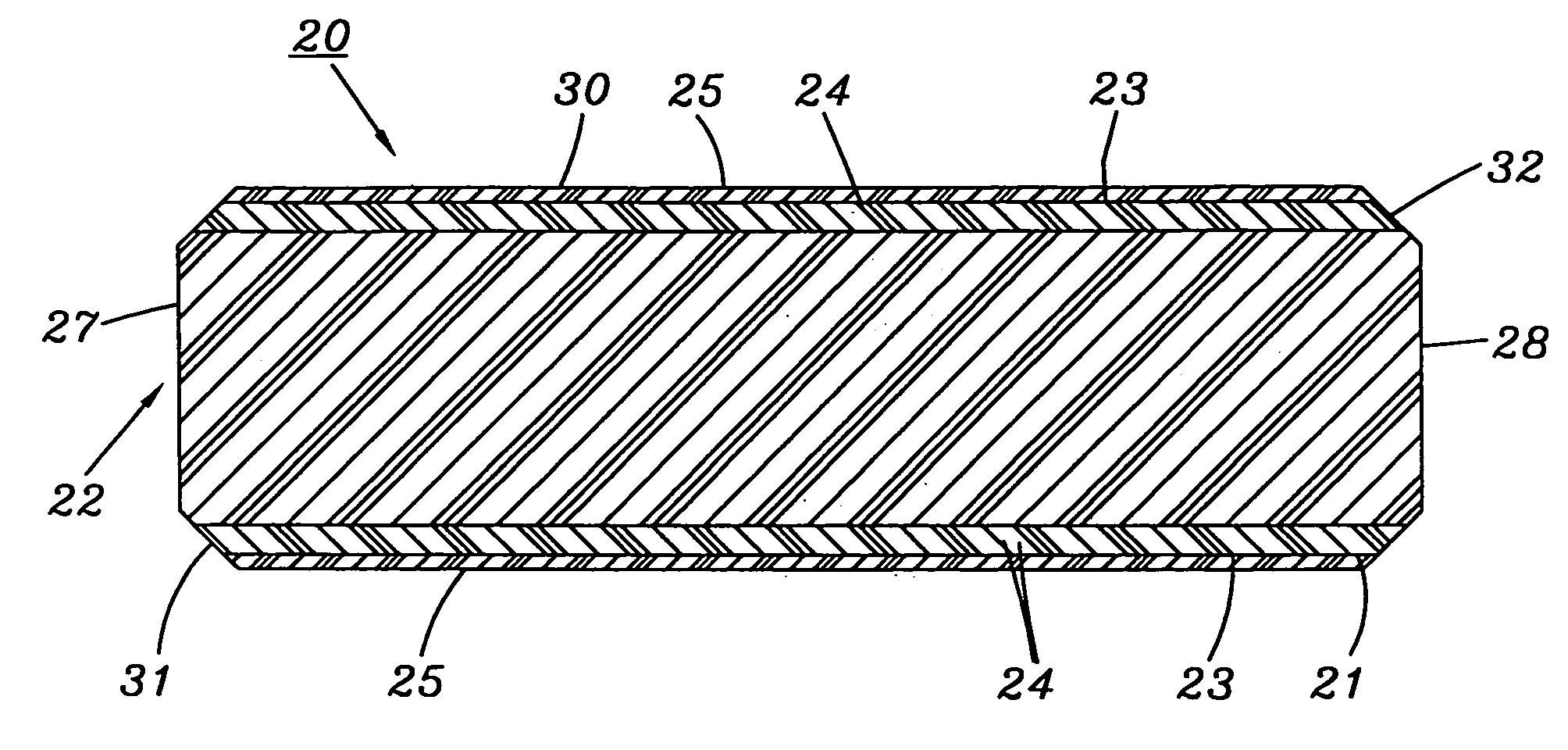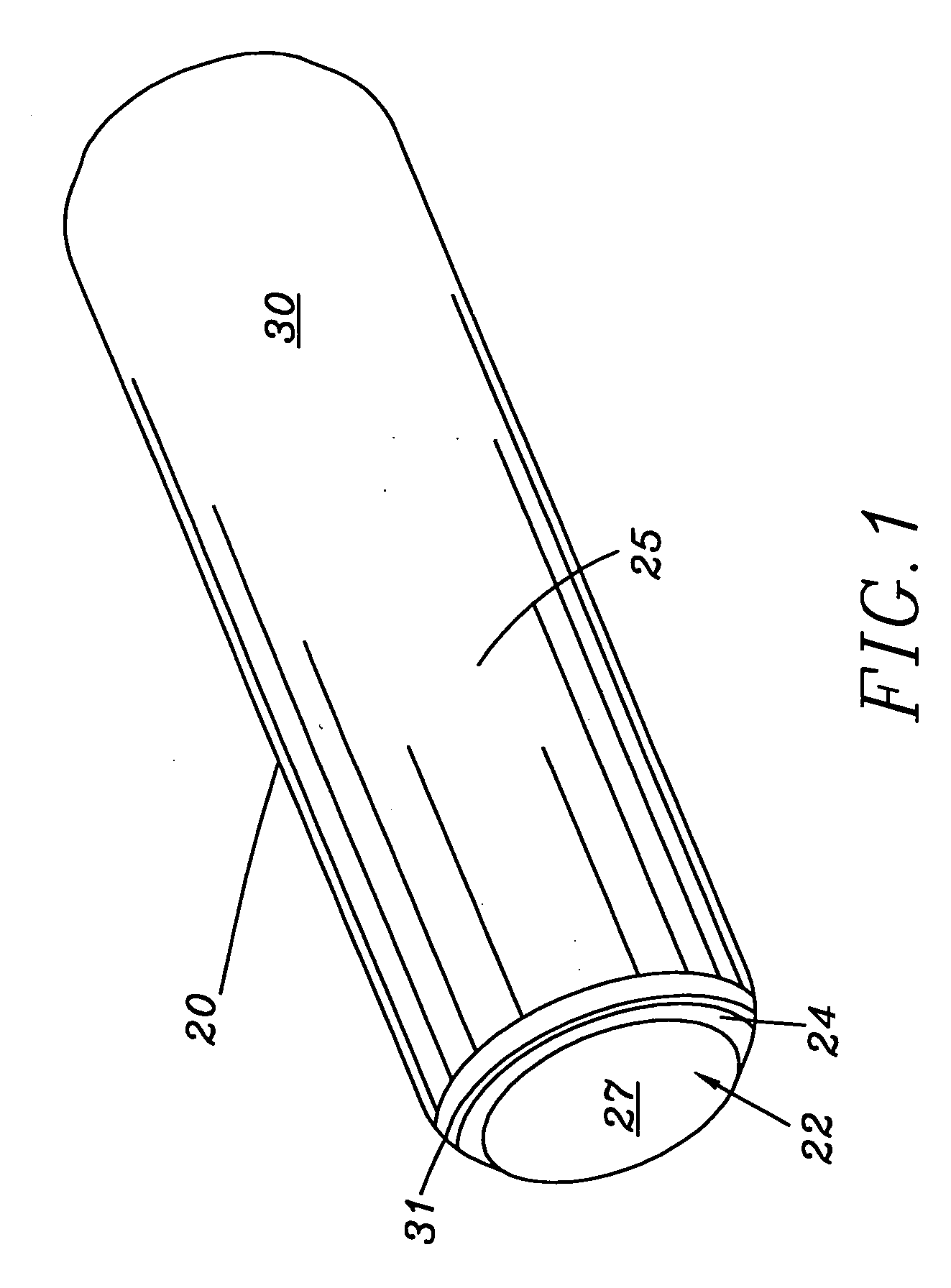Synthetic closure
a technology of synthetic closures and stoppers, applied in the field of closures or stoppers, can solve the problems of prior art systems being incapable of meeting all of the stringent requirements and demands imposed on bottle closures for wine products, and wine products impose the most burdensome standards and requirements on bottle closures
- Summary
- Abstract
- Description
- Claims
- Application Information
AI Technical Summary
Benefits of technology
Problems solved by technology
Method used
Image
Examples
examples
[0174] In order to demonstrate the efficacy of the present invention, a plurality of samples of multi-component / multi-layer synthetic bottle closures 20, manufactured in accordance with the present invention, were produced and tested. These sample products were produced by employing metallocene catalyst polyethylene and low density polyethylene intermixed with each other in the ranges detailed above to form core member 22. In forming core member 22 of each sample product, the two compounds were intermixed and formed using conventional foam extrusion equipment. In forming peripheral layer / skin member 24, the various compounds detailed above were employed to produce alternate embodiments of synthetic closure 20 of this invention and identified as Synthetic Closure A, Synthetic Closure B, and Synthetic Closure C. These separate embodiments were each tested and the results thereof are detailed below.
[0175] In addition, in order to unequivocally demonstrate the substantialy improved and...
PUM
 Login to View More
Login to View More Abstract
Description
Claims
Application Information
 Login to View More
Login to View More - R&D
- Intellectual Property
- Life Sciences
- Materials
- Tech Scout
- Unparalleled Data Quality
- Higher Quality Content
- 60% Fewer Hallucinations
Browse by: Latest US Patents, China's latest patents, Technical Efficacy Thesaurus, Application Domain, Technology Topic, Popular Technical Reports.
© 2025 PatSnap. All rights reserved.Legal|Privacy policy|Modern Slavery Act Transparency Statement|Sitemap|About US| Contact US: help@patsnap.com



